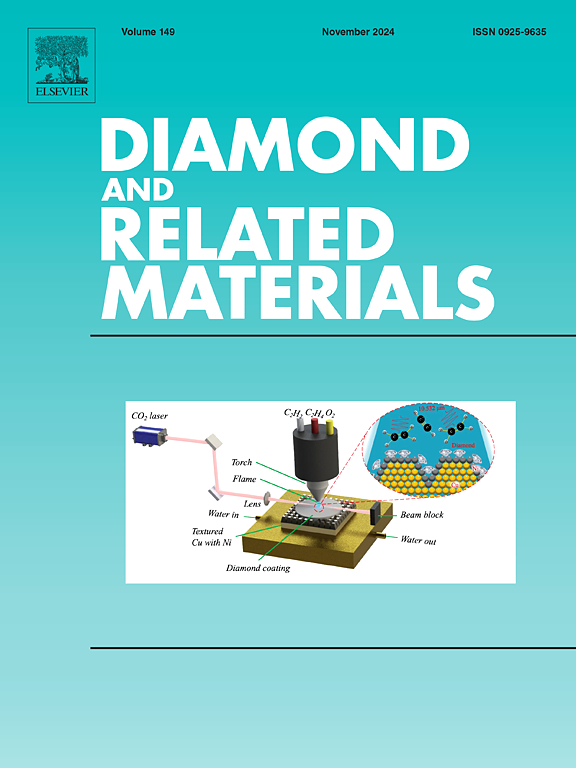通过锥形纺丝工程提高CNT纱基锌- v2o5电池的界面反应动力学
IF 5.1
3区 材料科学
Q2 MATERIALS SCIENCE, COATINGS & FILMS
引用次数: 0
摘要
柔性水性锌离子电池(azib)因其固有的安全性、机械适应性和环保水性电解质而成为可穿戴智能设备的有前途的候选者。然而,纱线形azib的实际实施仍然面临着容量不足、活性物质分布不均匀和能量密度有限的挑战。在此,我们报告了一种锥形纺丝工程策略,用于制造具有优化结构和Zn2+存储能力的碳纳米管/五氧化二钒(CNT/V₂O₅)复合纱线阴极。与双卷纺纱相比,锥形纺纱的CNT/V2O5纱线表现出优异的电化学指标,包括在1 mA cm - 2时的高面积容量为1.32 mAh cm - 2,在145.80 mW cm - 3时的显著体积能量密度为168.76 mWh cm - 3。值得注意的是,这些值超过了迄今为止报道的最先进的纱线锌离子电池。这些进步源于锥形纺纱的分层设计阴极结构,从而增强了界面反应动力学。此外,组装成纱线状的azib可以有效地储存太阳能,为可穿戴电子设备供电。这项工作开创了一种分层结构工程策略,以实现高性能的基于纱线的azib,为下一代可穿戴储能系统铺平了道路。本文章由计算机程序翻译,如有差异,请以英文原文为准。

Enhancing the interfacial reaction kinetics of CNT yarn-based Zn-V2O5 batteries via cone-spinning engineering
Flexible aqueous zinc-ion batteries (AZIBs) have emerged as promising candidates for wearable smart devices due to their inherent safety, mechanical adaptability, and eco-friendly aqueous electrolytes. However, practical implementation of yarn-shaped AZIBs remains challenged by insufficient capacity, non-uniform active material distribution, and limited energy density. Herein, we report a cone-spinning engineering strategy to fabricate carbon nanotube/vanadium pentoxide (CNT/V₂O₅) composite yarn cathodes with optimized architecture and Zn2+ storage capability. Compared with biscrolled counterparts, the cone-spun CNT/V2O5 yarn demonstrates exceptional electrochemical metrics, including a high areal capacity of 1.32 mAh cm−2 at 1 mA cm−2 and remarkable volumetric energy density of 168.76 mWh cm−3 at 145.80 mW cm−3. Notably, these values surpass most state-of-the-art yarn-based zinc-ion batteries reported to date. These advancements stem from the hierarchically engineered cathode architecture of cone-spun yarns, leading to the enhanced interfacial reaction kinetics. Additionally, the assembled yarn-shaped AZIBs can be utilized to efficiently store the solar energy to power wearable electronics. This work pioneers a hierarchical structural engineering strategy to achieve high-performance yarn-based AZIBs, paving the way for next-generation wearable energy storage systems.
求助全文
通过发布文献求助,成功后即可免费获取论文全文。
去求助
来源期刊

Diamond and Related Materials
工程技术-材料科学:综合
CiteScore
6.00
自引率
14.60%
发文量
702
审稿时长
2.1 months
期刊介绍:
DRM is a leading international journal that publishes new fundamental and applied research on all forms of diamond, the integration of diamond with other advanced materials and development of technologies exploiting diamond. The synthesis, characterization and processing of single crystal diamond, polycrystalline films, nanodiamond powders and heterostructures with other advanced materials are encouraged topics for technical and review articles. In addition to diamond, the journal publishes manuscripts on the synthesis, characterization and application of other related materials including diamond-like carbons, carbon nanotubes, graphene, and boron and carbon nitrides. Articles are sought on the chemical functionalization of diamond and related materials as well as their use in electrochemistry, energy storage and conversion, chemical and biological sensing, imaging, thermal management, photonic and quantum applications, electron emission and electronic devices.
The International Conference on Diamond and Carbon Materials has evolved into the largest and most well attended forum in the field of diamond, providing a forum to showcase the latest results in the science and technology of diamond and other carbon materials such as carbon nanotubes, graphene, and diamond-like carbon. Run annually in association with Diamond and Related Materials the conference provides junior and established researchers the opportunity to exchange the latest results ranging from fundamental physical and chemical concepts to applied research focusing on the next generation carbon-based devices.
 求助内容:
求助内容: 应助结果提醒方式:
应助结果提醒方式:


